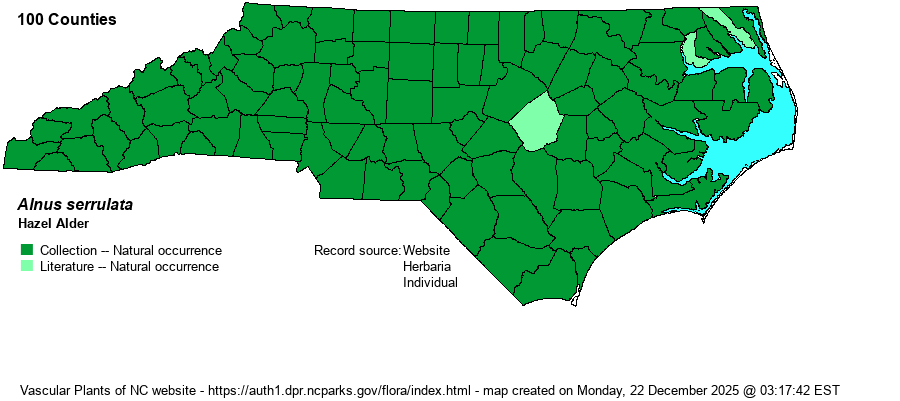| Author | (Aiton) Willdenow | |
| Distribution | Throughout the state and occurs in all 100 counties.
This is a widespread Eastern species occurring from eastern Canada to central FL, and to eastern TX. It is scarce to absent in the Great Lakes states.
| |
| Abundance | Common to very common nearly throughout, normally seen daily by an observer anywhere in the state. Slightly less common in the far northeastern counties, though it certainly does occur in all counties north of Albemarle Sound. | |
| Habitat | The species is typically found in wetlands, of many kinds. It favors fresh marshes and their edges, pond margins, wet thickets, streamsides (even in open country), openings in swamps and bottomlands, and other damp ground, usually where the soil is moderately rich and not overly sandy. It does occur slightly into uplands, though usually close to wetlands. |
| Phenology | Blooms in February and March, and fruits from August to October. Catkins that will flower the next year appear in the previous fall season and are visible in winter. | |
| Identification | This is a deciduous shrub with alternate leaves, that grows to an average height of 8-12 feet high. The leaves are widely ovate to obovate (and can be elliptic), to about 3-4 inches long. They are strongly serrate, and the leaves show a strong series of parallel veins leaving the midvein. For most of the year either the long catkins or the small elliptical “cones”, which look like tiny pine cones, are visible and provide easy identification. Most people quickly become familiar with this very common shrub along streams or other wetlands. | |
| Taxonomic Comments | None
| |
| Other Common Name(s) | This species has several nearly equally used common names. Tag Alder is often used, as is Smooth Alder. | |
| State Rank | S5 | |
| Global Rank | G5 | |
| State Status | | |
| US Status | | |
| USACE-agcp | FACW link |
| USACE-emp | OBL link |

